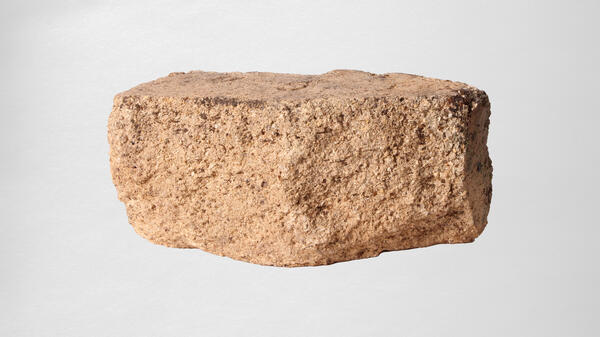Mariinsk district became one of the best-known Siberian exile places in the late 1920s when the mass repressions began in Russia. Specifically, in the village of Suslovo, there was a high-security and relatively unknown facility of the People’s Commissariat of Internal Affairs — the underground prison. The museum’s collection houses a stone fragment from the special facility wall.
The official name of this prison — the 6th division of the Siberian Forced Labor Camp under the All-Union State Political Administration, in abbreviated form Siblag. As explained by the Mariinsk old residents, people called it ‘Nagovitsyn’s prison’, “the underground prison” and “the box”. A vegetable dehydration plant, self-built by the prisoners, was used as the prison facility.
The scientists failed to calculate the precise death toll in this prison until the present. According to unofficial figures, more than 40 thousand people died within the prison walls.
The prison above ground level consisted of two separate blocks. In one block, there were a criminal investigator’s office, two medical unit wards, inspectors’ daily room, as well as four cells, each for 25 — 50 prisoners. In another block, there were a baths section, guardroom, and four additional cells.
The former factory subsurface part was built as a potato dryer, for that reason, there were large stoves in the basement. Later, these rooms were used as additional disciplinary cells. The most offending prisoners were incarcerated there sometimes.
One engine-driven generator operated for both zones, for that reason the electricity was saved. The prisoners of the disciplinary cells were always in the dark. They saw the light only when a new prisoner was brought to the cell, or the prisoner who served the fixed time was withdrawn or bread and water were brought.
Before 1949, in the stone-built prison only political prisoners were kept. Later on, criminals from “otritsalovka”, those who systematically violated the prison discipline, ended up in the “box”. They were carted off from the neighboring confinement camp and convict colonies, making up 35 camps in total.
Today, only the former disciplinary cells’ basement, boiler room, and baths sullage pit remained of the stone prison on the bank of the Jura.
The official name of this prison — the 6th division of the Siberian Forced Labor Camp under the All-Union State Political Administration, in abbreviated form Siblag. As explained by the Mariinsk old residents, people called it ‘Nagovitsyn’s prison’, “the underground prison” and “the box”. A vegetable dehydration plant, self-built by the prisoners, was used as the prison facility.
The scientists failed to calculate the precise death toll in this prison until the present. According to unofficial figures, more than 40 thousand people died within the prison walls.
The prison above ground level consisted of two separate blocks. In one block, there were a criminal investigator’s office, two medical unit wards, inspectors’ daily room, as well as four cells, each for 25 — 50 prisoners. In another block, there were a baths section, guardroom, and four additional cells.
The former factory subsurface part was built as a potato dryer, for that reason, there were large stoves in the basement. Later, these rooms were used as additional disciplinary cells. The most offending prisoners were incarcerated there sometimes.
One engine-driven generator operated for both zones, for that reason the electricity was saved. The prisoners of the disciplinary cells were always in the dark. They saw the light only when a new prisoner was brought to the cell, or the prisoner who served the fixed time was withdrawn or bread and water were brought.
Before 1949, in the stone-built prison only political prisoners were kept. Later on, criminals from “otritsalovka”, those who systematically violated the prison discipline, ended up in the “box”. They were carted off from the neighboring confinement camp and convict colonies, making up 35 camps in total.
Today, only the former disciplinary cells’ basement, boiler room, and baths sullage pit remained of the stone prison on the bank of the Jura.



